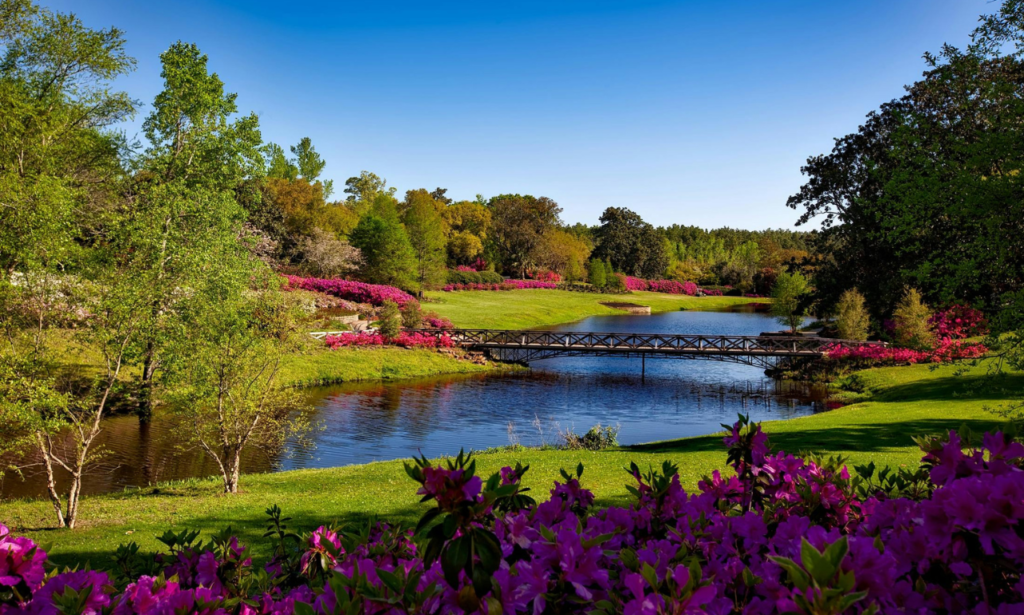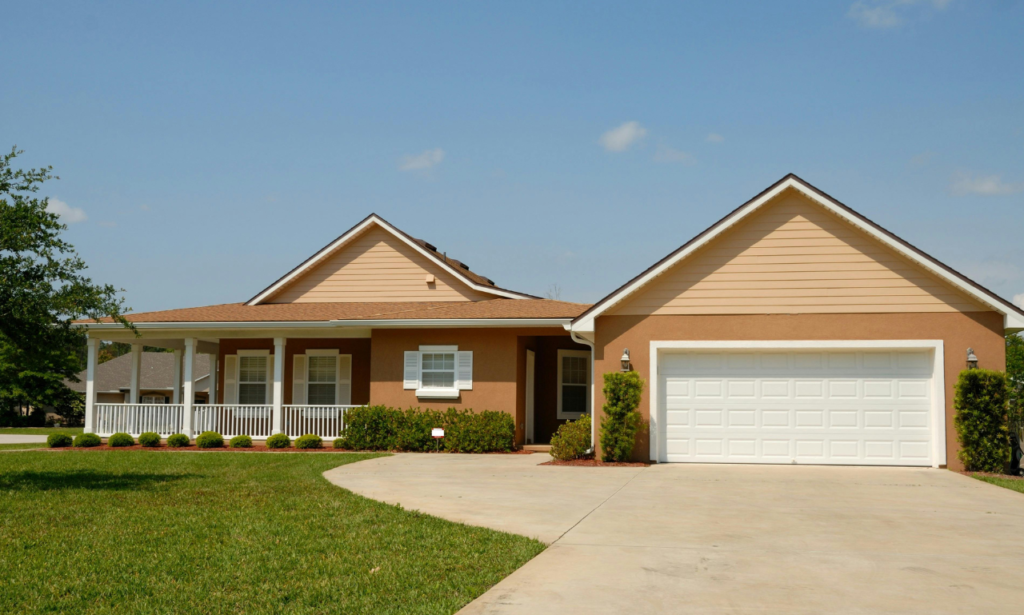Introduction
When it comes to enhancing the curb appeal and functionality of your home, landscaping is an essential element. Whether you’re a homeowner looking to boost your property value or simply want a more enjoyable outdoor space, landscaping offers countless benefits. At Home-Hearted.com, we understand the importance of creating outdoor environments that are both beautiful and practical. In this guide, we’ll delve into various landscaping home-hearted com ideas and tips to help you transform your outdoor spaces into an extension of your home.
The Importance of Landscaping
Landscaping is more than just planting trees and bushes; it’s about creating a beautiful environment that complements your home. A well-planned landscape not only enhances the aesthetic appeal of your property but also contributes to environmental sustainability, energy efficiency, and personal well-being.
- Curb Appeal: A beautifully landscaped yard is the first thing people notice. It creates a welcoming atmosphere and can significantly increase your home’s resale value.
- Environmental Benefits: Proper landscaping can reduce soil erosion, manage storm water runoff, and improve air quality by filtering pollutants.
- Energy Efficiency: Strategic planting of trees and shrubs can provide shade during summer and act as windbreaks in winter, reducing your home’s energy consumption.
- Well-Being: Spending time in a well-maintained garden can reduce stress, improve mood, and encourage outdoor activities for the entire family.
Key Landscaping Home-hearted com Trends in 2024
To stay ahead in the landscaping game, it’s crucial to be aware of the latest trends. At Home-Hearted.com, we focus on trends that not only look great but are also sustainable and functional.
- Native Plant Landscaping: Native plants are adapted to the local climate and soil conditions, requiring less water, fertilizers, and pesticides. They attract local wildlife, contributing to the ecosystem’s health.
- Edible Gardens: Growing your own fruits, vegetables, and herbs is a trend that combines beauty with functionality. Edible gardens can be seamlessly integrated into your landscape design.
- Sustainable Landscaping: Using recycled materials, drought-resistant plants, and smart irrigation systems are key to creating an eco-friendly landscape.
- Outdoor Living Spaces: Extending your indoor living spaces to the outdoors is a trend that’s here to stay. Consider adding patios, decks, outdoor kitchens, or fire pits to create functional outdoor areas.
- Water Features: Water features like ponds, fountains, and waterfalls add a sense of tranquility to your garden. They can also help mask noise pollution and attract wildlife.
Planning Your Landscape Design with Home-Hearted.com

Before you begin excavating, you must have a clear plan. Proper planning ensures that your landscape is cohesive, functional, and sustainable.
- Assess Your Space: Begin by evaluating your outdoor space. Consider factors such as sunlight, soil type, drainage, and the existing vegetation.
- Set Your Goals: Determine what you want to achieve with your landscaping. Do you want a space for entertaining, a garden to grow vegetables, or a serene retreat? Your goals will guide your design choices.
- Create a Budget: Landscaping can be expensive, so it’s important to set a realistic budget. Prioritize the elements that are most important to you and be prepared to make compromises if necessary.
- Choose the Right Plants: Selecting plants that thrive in your local climate and soil conditions is crucial. Native plants are often the best choice, but you can also consider non-native species that are well-adapted to your area.
- Plan for Maintenance: Consider how much time and effort you’re willing to invest in maintaining your landscape. Some designs require more upkeep than others.
DIY Landscaping vs. Hiring a Professional
When it comes to landscaping, you have the option of doing it yourself or hiring a professional. Each approach has its pros and cons.
DIY Landscaping:
Pros: Cost-effective, allows for personal creativity, and provides a sense of accomplishment.
Cons: Requires time, effort, and knowledge of plants and design principles. Mistakes can be costly.
Hiring a Professional:
Pros: Professionals bring expertise, can handle complex projects, and save you time and effort.
Cons: More expensive, and you may have less control over the final design.
At Home-Hearted.com, we recommend a hybrid approach for landscaping. Start with DIY for smaller projects and hire a professional for larger, more complex tasks.IY for smaller projects and hire a professional for larger, more complex tasks.
Landscaping home-hearted com Ideas for Different Spaces
Different areas of your outdoor space serve different purposes. Here are some landscaping home-hearted com ideas tailored to various parts of your property.
Front Yard:

Walkways: Create welcoming walkways with pavers, gravel, or stepping stones. Add border plants to enhance the aesthetic appeal.
Lawn Alternatives: Replace traditional grass with low-maintenance ground covers or artificial turf.
Seasonal Blooms: Plant a variety of flowers that bloom at different times of the year to keep your front yard vibrant year-round.
Backyard:
Outdoor Kitchen: Install an outdoor kitchen with a grill, sink, and countertop for entertaining guests.
Fire Pit: A fire pit provides warmth and serves as a focal point for outdoor gatherings.
Play Area: If you have children, consider adding a play area with a sandbox, swing set, or treehouse.
Side Yard:
Garden Path: A narrow garden path lined with flowers or shrubs can make the side yard more inviting.
Vertical Gardening: Utilize vertical space by installing trellises or green walls for climbing plants.
Patio:
Container Gardening: Use containers to grow plants on your patio. This is a great option for small spaces or renters.
Furniture: Choose durable, weather-resistant furniture that complements your landscape design.
Sustainable Landscaping Practices by home-hearted.com
Sustainability is a key consideration in modern landscaping. Here are some practices to make your landscape eco-friendly.
- Water Conservation: Use drip irrigation systems, rain barrels, and drought-tolerant plants to reduce water usage.
- Composting: Create a compost bin to recycle kitchen and garden waste. Compost enriches the soil, reducing the need for chemical fertilizers.
- Mulching: Apply mulch to retain moisture, suppress weeds, and improve soil health.
- Natural Pest Control: Encourage beneficial insects like ladybugs and bees by planting a diverse range of flowers. Avoid using chemical pesticides.
Conclusion
Landscaping is an art that combines creativity, functionality, and sustainability. At landscaping Home-Hearted com, we’re passionate about helping you transform your outdoor spaces into a reflection of your personal style and values. Whether you’re embarking on a DIY project or seeking professional help, our comprehensive resources and expert advice will guide you every step of the way.
Explore our website for more landscaping ideas, tips, and inspiration to create the outdoor space of your dreams. Remember, a well-designed landscape is more than just a pretty view; it’s an investment in your home, your well-being, and the environment.
FAQs
How to landscape around a house?
To landscape around a house, start by choosing plants that complement your home’s architecture, ensuring proper spacing for growth. Use Home-Hearted.com for expert advice on selecting the right greenery and adding features like pathways or mulch for a polished look.
How wide should landscaping be around a house?
2 to 8 feet
The ideal width for landscaping around a house varies but typically ranges from 2 to 8 feet, depending on the space available and the desired aesthetic. At Home-Hearted.com, we recommend considering plant growth and maintenance needs when determining the width.
What landscaping adds most value to home?
The landscaping features that add the most value to a home include well-maintained lawns, native plants, and outdoor living spaces like patios and fire pits. According to Home-Hearted.com, these elements enhance curb appeal and create functional, attractive outdoor environments.
How do I choose a landscape?
To choose a landscape, start by assessing your space, setting clear goals, and considering your climate and maintenance needs. Home-Hearted.com offers expert tips and inspiration to help you create a landscape that reflects your style and enhances your home’s appeal.

